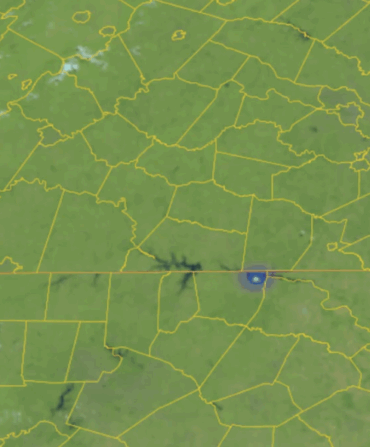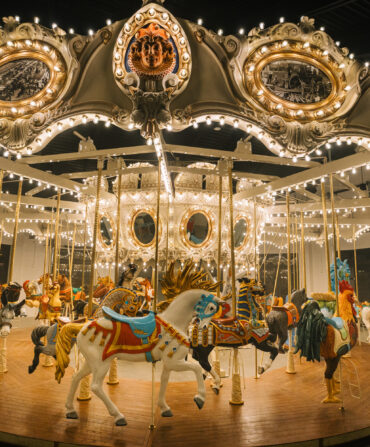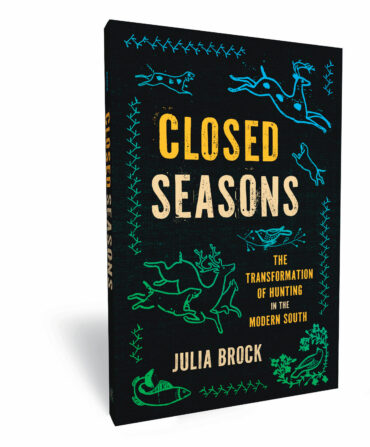I’m walking up Dauphine Street in New Orleans when a man turns the corner carrying a tuba and walking an enormous hairy dog, simultaneously. I guess I give him a startled look. And here’s what he says: “You get used to it.”
I don’t think I would get used to it if by “getting used to it” he means becoming bleakly inured to your extraordinary lot in life and art. Neither did George E. Ohr, known as the Mad Potter of Biloxi.
He was, as a sign outside his five-story pink pagoda-like Mississippi shop proclaimed, the “GREATEST” ART POTTER ON EARTH, “YOU PROVE THE CONTRARY.” And he never got used to the world’s indifference to that challenge. Eventually, he quit potting altogether and buried a number of his pots somewhere no one has found, rather than get used to being regarded as just another potter.
GET A BILOXI SOUVENIR, BEFORE THE POTTER DIES, OR GETS A REPUTATION, read another of his signs, and that was good advice for customers at that time, or at least for their grandchildren. In 1905 Ohr might price a piece prohibitively at twenty-five dollars. Today it could go for sixty thousand. His collectors have included Andy Warhol and Steven Spielberg.
In 2010, ninety-two years after Ohr died underappreciated, Biloxi opened a museum to him, a $40 million cluster of silver pods overlooking the Gulf of Mexico, its architect the noted Frank Gehry. On display are a selection of Ohr’s impossible pottery—as stout as amphorae yet as light as leaves. But to see a greater range of his widely scattered surviving work you need to look through one of the richly illustrated books about him. At the museum I acquired George Ohr: The Greatest Art Potter on Earth, by Eugene Hecht, which is bursting with vases and pitchers and bowls as individual as rose blooms and as ripply as sea waves.
I don’t even like pottery, particularly. But Ohr’s stuff reminds me of the notion that human beings were first fashioned from clay. And here’s something about potting that always appealed to me: You don’t make a pot or compose a pot or work up a pot; you throw a pot. Don’t you love to throw things, where possible? Why walk across the room to a receptacle and bend over and place something there, when you can toss it? If you go by feel, and don’t stop to think, chances are good that it will go in. Once I threw a toenail clipping eight and a half feet into a smaller-than-average wastebasket. Bingo.
You can’t throw a column. But you don’t have to just crank it out—you can try to take George Ohr as a role model. Not that anybody knows how he managed to spin wet clay into such elaborate yet delicate shapes, some of them sleek, some of them prestidigitally crumpled. “When I found the potter’s wheel,” he said, “I felt it all over like a wild duck in water.” He called his pieces his “mud babies.” Some of them incorporate lifelike snakes or lizards or crabs. He dug the clay himself from the banks of a nearby river, the Tchoutacabouffa.
Oh, and of course that book includes photographs of Ohr himself, him with his wild piercing eyes and bulgy biceps (he apprenticed as a blacksmith, shaping red-hot metal) and his eighteen-to-twenty-four-inch mustache (estimates vary) that he might wear straight out to both sides or swept over to one side or tied behind his head. In one wonderful trick photo, Ohr appears to be standing on his hands and head and balancing a vase on the bottom of one foot, with his other leg waving around. In fact the photo is upside down. He was standing on the vase, on one foot, and holding up a section of flooring with his hands and head. The vase, shown in color on another page, is a red-and-yellow-dappled beauty eight and a quarter inches tall. All his weight on that! He was a character, all right, but his strength was in what he threw.
Around 1900 he threw an umbrella stand for the Smithsonian, which didn’t send it back but didn’t display it either till cognoscenti began to appreciate his work in the 1980s. On that stand he inscribed:
‘This Pot is here,’
and I am the
Potter Who was
G. E. Ohr.
Ohr would have been playing that tuba and riding that dog.








